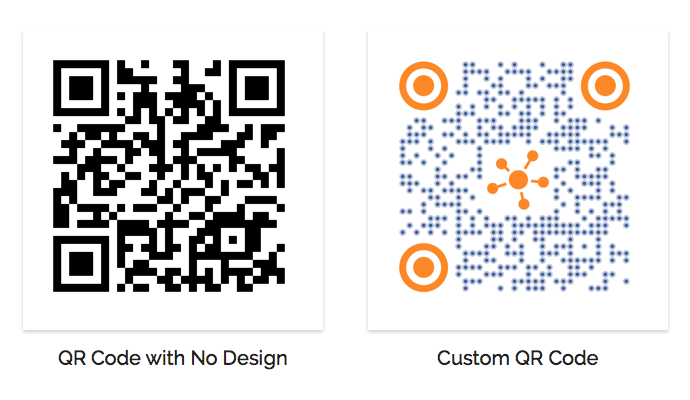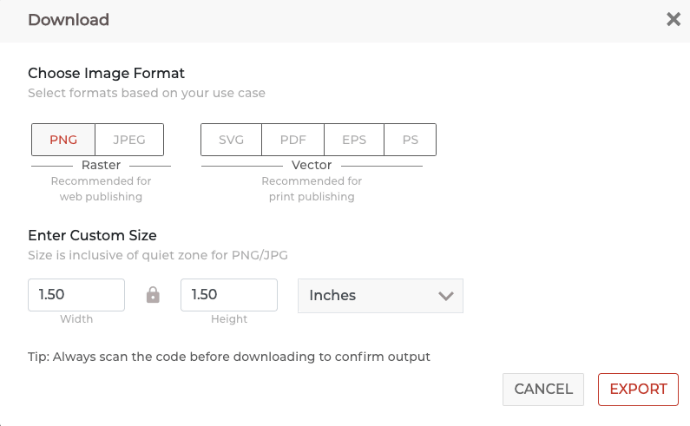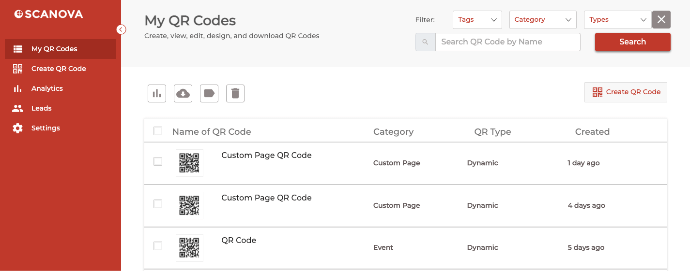Have you created a podcast recently or are planning to create one? Then you’d surely want as many people as possible to listen to it. And to do that, you’ll have to run promotional campaigns.
So, you’d use various marketing channels. It could be print or online media. While online media has a greater reach over print, it has a shorter attention span.
Print media, on the other hand, has a longer attention span but is not actionable.
So the best way is to make use of both of them together. How? With QR Codes.
QR Codes are known for connecting offline content to online media. In this article, we’ll discuss how you can use QR Codes to promote your podcast.
Also read: Types of QR Code
A. What is a podcast QR Code
As the name suggests, a Podcast QR Code, when scanned, takes the end-users to the encoded audio. All that they need to do here is—scan the QR Code and access the podcast.
No need for them to manually type the weblink to your work. Nor would they need to head on to the required platform to search for your podcast. A simple scan would do it all for them.
And the easier the process, the better is the rate of conversions.
Here’s how this works:
- You create a QR Code for your podcast
- You add it to your promotional creatives along with a small instruction statement (also called CTA) that nudges the end-users to take an action. For example, Scan here to listen to the podcast
- When your audience sees the QR Code, they pull out their smartphone to scan it. Once scanned, they get redirected to the required podcast
Sounds pretty simple, right?
And the good news is that you can even track the performance of your campaign with the QR Code. We’ll talk more about it later in this article.
Also read: Types of QR Codes
B. Benefits of QR Codes
You now know QR Codes can help take the end-users to the podcast via print media. But that’s not where it ends. In fact, here are some other benefits of QR Codes:
1. Customizable
If you are planning on using the Podcast QR Code on promotional materials, you must add design to them. You can do it by adding your brand’s colors and logo or a background image to it.
Doing so makes the QR Codes act as a point of engagement to grab the audience’s attention.
As a matter of fact, custom QR Codes attract 50-200% more scans than plain black-and-white ones.

2. Trackable
QR Codes are trackable. This means you can monitor their entire scanning activity. For example, how many people have scanned the QR Code, from where they’ve done it, and when they’ve done it.
In fact, you can even monitor how people engage with the content encoded in the QR Codes after scanning it. It could be clicking on a button that says ‘Listen to the Podcast Now‘.
This data gives you valuable insights into your target audience and can help optimize your future campaigns better.
Generate a QR Code For Your Unique Case
START TODAY!
3. Editable
Say you have created a Podcast QR Code. And you’ve used it on the promotional material.
But for some reason, you want to change the audio file encoded in it. Well, a dynamic QR Code can help you out here because it is editable. That means you can edit the encoded content without the need to recreate an all-new QR Code.
4. High-speed Scannability
QR Codes have a high-speed scannability. And they come alive within seconds of holding your camera in front of them. This makes the user experience faster and better.
5. Error correction
QR Codes have the feature of error correction. It ensures that even after being damaged, distorted, or dirty, they scan well. This is especially useful if you are going to use QR Codes for print media creatives (where wear and tear is normal).
C. How to create a QR Code for podcast
Now you know why it makes sense to use QR Codes for podcasts. So, the next question is—how to create one?
1. Decide on the QR Code category
Depending on what you’d want your end-users to see, you’ll have to choose the relevant QR Code category.
For example, if you want to help them listen to your podcast, you need to select an Audio QR Code. But if you want to redirect them to your website, you’d need a Website URL QR Code.
In fact, in case you’d like to access the podcast on an app, you can choose to create an App Deep Link QR Code.
Once decided on the QR Code category, you’d need to find a suitable QR Code generator. For your convenience, here is a detailed comparison chart of the best QR Code generators available online. You can go through it to make a sound decision.
2. Create a QR Code
Using Scanova for a demo, here’s how you can create a QR Code for a podcast:
a. Go to Scanova
b. Select the most relevant QR Code category

c. Add the content you want to encode in the QR Code and click Continue
d. Name the QR Code and click Create QR Code
e. On the page that loads, you’ll see the image of your QR Code along with the Edit Design button. If you click on it, you’ll see two design options to choose from—Custom Logo Design and Custom Background Design. The custom logo design allows you to add a logo and color to it. On the other hand, custom background design allows you to add an image as QR Code’s background

f. Once you’ve finalized the design, click Download. A window will open prompting you to sign-up for a 14-day free trial. Once you’ve signed up, proceed to download the QR Code
g. Now you’ll be asked to specify the QR Code image’s format and size

h. Once you’ve submitted the details, click Export
That’s it. Your QR Code for podcasts will be downloaded.
D. How to edit the QR Code
Note that you can edit a QR Code only if it is dynamic in nature. While Audio QR Codes are dynamic by default, Website URL QR Codes are not.
With a Website URL QR Code, you can choose if you’d want it to be static or dynamic. While dynamic QR Codes are both editable and trackable, static ones are not.
So if your QR Code is dynamic in nature, here are the steps using which you can edit the encoded data:
1. Login to your Scanova QR Code Generator account
2. Here, on the dashboard, go to My QR Codes

3. Hover on the QR Code you want to edit and click the View/Edit option against it
4. On the page that loads, head on to the content section and click View/Edit
5. Make the required changes and click Apply
That’s it. Your QR Code is updated.
E. Best practices
Here are some QR Code practices that you must follow while working with a Podcast QR Code:
1. Add an appropriate CTA
CTA translates to a ‘Call-to-action’ statement. It is a small instruction that nudges the user to take the required action.
It could be anything such as ‘Scan here to listen to the podcast’ or ‘Scan here to visit our website’.
2. Add a design to the QR Codes
As mentioned earlier, a custom-designed QR Code can help you grab your audience’s attention.
And in case you’d want to go ahead, here’s a detailed guide to do it
3. Test the QR Code
It is always advisable to test scan the QR Code before putting it out for your audience. QR Code can be scanned either by using your phone’s native camera app or a third-party scanning app.
Some of these include QR Reader, QR and Barcode scanner, and QR and Barcode Reader, available on both Play Store or App Store.
4. Choose optimal printing format
Make sure you download them in high-resolution formats such as SVG, EPS, and PDF. These formats ensure that the QR Code doesn’t get pixelated no matter how much resizing is done.
That’s it. That is all you need to know about QR Codes for podcasts. You can now create your own QR Code to help share your podcast with your target audience easily.
Generate a QR Code For Your Unique Case
START TODAY!
